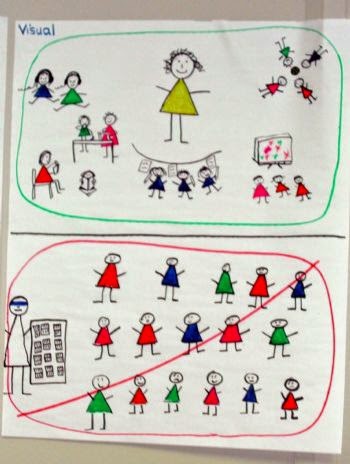HI!
I'm back for one final blog post! I actually might keep this blog going after I have moved on from this semester. I've really enjoyed blogging because a) it is something I find enjoyable b) I learn so much better reading and then reciprocating my thoughts by writing or in this case typing and c) It was FUN to blog as an assignment. But really I think once I have a classroom of my own it will be fun to keep a record of what I have done in my classroom that either was a success or failure especially when it comes to differentiation. I don't care if anyone read my blog either because in all honesty it was really just for me and for my own benefit of learning.
As I was just searching the web one night, I came across this and love it! I would love to have this in my classroom and have it be something my students know and understand...learning is never ending no matter how old you are. In my future classroom if you are ever "finished" with your lesson assignment, then I will definitely have strategies (tools) for them to be doing to be sure learning never ends.
In order to sum everything up that I've learn over the past couple of months, I found these awesome pictures to help me.
In chapter 7 of Fulfilling the Promise, the heading reads, "The Simple, Hard Truth About Teaching" Teaching is HARD. I was able to discover that first hand the last 3 weeks during my field work. I came home exhausted and I wasn't even the one doing all the work. Teachers deal with a lot...from the students to the parents, it is hard and that is the plain and simple truth. I feel that as a teacher even though it is hard as long as you never give up and you get to know the students and you always have the student in mind then it will make teaching a heck of a lot easier for you. In the chapter it gives a little recap on what students want and what effective teachers do. I feel it basically said, "Effective teachers know and love their students...it is responsive teaching that begins with creating ties to each child...."
Look at this picture...the teacher in it is considering trying to use differentiation. But then after thinking about it she decides it is easier to just do nothing...honestly it might be easier, but I feel very strongly about trying. You have to TRY....don't just do nothing. In Fulfilling the promise it said that we know how to be effective teachers but WHY IS IT SO HARD THEN? that is a great question. teachers really do want to care for each child, but there are things that come up and get in the way of your feelings for a child but the book guarantees the more willing we are to take the risks, the better the lives of our students are likely to become, and the greater the fulfillment we are likely to feel at the end of the day. With that said....TRY......TAKE A RISK.....what's there to lose anyways?
I have loved having the opportunity to read this book. It is a textbook that I actually read ALL of it! In my whole college life, I can only say that I've read maybe 4 books total and this was one of them. It was a good read and a easy read. I promise if you read it you will not be let down. It has taught me so much about what the student needs from the teacher and how the teacher can help give the student what they need.
One last final quote that I read and of course loved was this, "If we allow ourselves to fall in love with what we do, we will be reborn countless times, almost always in a form stronger and more fully human than the one that preceded it. Thus it may be that to teach more responsively, more effectively, we ultimately need to accept two challenges. First, we need to cultivate passion for what we do. Second, we need to remove our protective armor and allow our students to shape us, reflecting on and learning from what we see."
Until next time, keep on differentiating!
BYE!!! :)









































